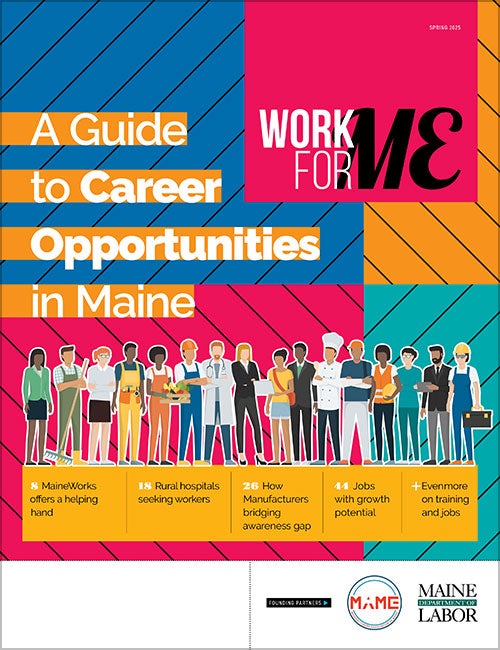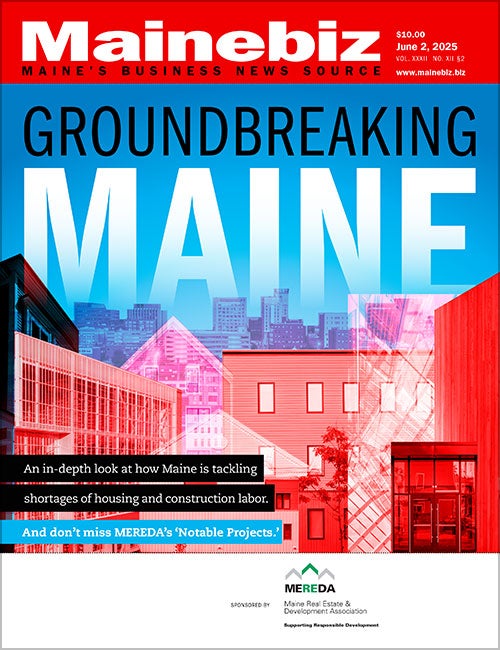
Processing Your Payment
Please do not leave this page until complete. This can take a few moments.
- News
-
Editions
View Digital Editions
Biweekly Issues
- December 1, 2025
- Nov. 17, 2025
- November 03, 2025
- October 20, 2025
- October 6, 2025
- September 22, 2025
- + More
Special Editions
- Lists
- Viewpoints
-
Our Events
Event Info
Award Honorees
- Calendar
- Biz Marketplace
Op-Ed: 'Big, beautiful bill’ endangers planned factory in Lewiston — and very future it claims to champion

This summer, I expected to be celebrating the launch of my company’s transformative manufacturing facility in Lewiston, an advanced battery integration plant combining U.S.-made inverters and control systems with international battery modules. The facility represents $6 million in investment, backed by the U.S. Small Business Administration, and within three years was set to employ 70 people directly and support hundreds more through supply chains in Maine and across the country.
Instead, I’m facing a crisis. Dynamic Grid’s major investors and customers are concerned, citing the sweeping domestic policy bill passed by the House — what some have dubbed the “big, beautiful bill” — as a reason for concern. Without their funding, our facility is at risk of not opening.
House Republicans and the Trump administration think we can generate our way out of the energy crisis — but that is not true. We need smart policy, smart control and distributed technologies to make that happen, all built in America. This bill is a catastrophe for all four.
Despite its messaging, the bill is not a revival of American industry — it’s a rollback. It undercuts cleantech manufacturers, weakens investment confidence and reinforces an outdated, centralized vision of energy that simply doesn’t match the complexity of the modern world.
As an expert in grid architecture and complex systems — through my role on the U.S. Department of Energy’s GridWise Architecture Council and as a senior advisor to the United Nations Environment Programme’s Building Action Coalition — I know that solving the energy crisis requires more than just adding more generation capacity. It requires an integrated systems approach.
This means investing in distributed energy resources, smart grid controls, energy storage and local resilience, all of which are coordinated to address increasing demand in real-time. It means connecting buildings, transportation, land use, and manufacturing into a network of intelligent, human-centered infrastructure. It means investing in innovation ecosystems that make America not just energy-independent, but energy-agile.
I founded Dynamic Grid on this vision. We develop microgrids, utility control software and energy storage systems that make buildings part of the solution.
Our Lewiston plant of 37,500 square feet was designed to be a hub for assembling these systems, pairing American AI software and hardware into a scalable solution for commercial and industrial customers.
By the end of 2025, it would be supporting 15 direct jobs and a similar number in local businesses. Dynamic Grid would ultimately employ up to 70 people, mostly in Lewiston. We were planning on having English as a second language classes in our building to support new immigrants in their transition to the United States. With an urban location, we were hoping most of our employees would be able to walk to work or take public transportation.
Additionally, we currently have a proposal with the US Department of Energy that is not moving to award because of the new priorities of the administration. This project would also work in Lewiston, helping to right-size distribution grid infrastructure and optimize the integration of new distributed resources using AI software. This would save ratepayers money.
Now, with investor confidence in my company and the economic future shaken by the bill’s regressive priorities, that future is in limbo.
Globally, I work with UNEP’s Building Action Coalition to help shape regenerative community infrastructure with solutions that are not just sustainable but restorative. Other nations are embracing these ideas. As we’ve seen over the last several years, the U.S. has the talent, the tools, and the momentum to lead on infrastructure and energy but only if Congress doesn’t undermine American businesses’ capacity to innovate.
We need an energy policy that is as dynamic as the systems we are trying to transform. That means stability for investors, clarity for manufacturers, and support for innovative technologies made right here in America.
There is still time to get this right. Business leaders need to be heard, the Senate must revise the bill, and Maine's two senators must stand up for Mainers like me and my employees who will be hurt by it. The administration must recommit to a future that is adaptable, intelligent and resilient.
Because without that, we’re not just risking one factory — we’re forfeiting leadership in the global energy transformation.
About the author
Kay Aikin is the founder and CEO of Dynamic Grid, a Portland-based energy systems company focused on microgrid design, energy storage integration and distributed intelligence. She was honored on the Mainebiz Next list in 2020.
Mainebiz web partners

The Giving Guide
The Giving Guide helps nonprofits have the opportunity to showcase and differentiate their organizations so that businesses better understand how they can contribute to a nonprofit’s mission and work.
Learn More
Work for ME
Work for ME is a workforce development tool to help Maine’s employers target Maine’s emerging workforce. Work for ME highlights each industry, its impact on Maine’s economy, the jobs available to entry-level workers, the training and education needed to get a career started.
Learn More
Groundbreaking Maine
Whether you’re a developer, financer, architect, or industry enthusiast, Groundbreaking Maine is crafted to be your go-to source for valuable insights in Maine’s real estate and construction community.
Learn more-
The Giving Guide
The Giving Guide helps nonprofits have the opportunity to showcase and differentiate their organizations so that businesses better understand how they can contribute to a nonprofit’s mission and work.
-
Work for ME
Work for ME is a workforce development tool to help Maine’s employers target Maine’s emerging workforce. Work for ME highlights each industry, its impact on Maine’s economy, the jobs available to entry-level workers, the training and education needed to get a career started.
-
Groundbreaking Maine
Whether you’re a developer, financer, architect, or industry enthusiast, Groundbreaking Maine is crafted to be your go-to source for valuable insights in Maine’s real estate and construction community.
ABOUT
NEW ENGLAND BUSINESS MEDIA SITES
No articles left
Get access now
In order to use this feature, we need some information from you. You can also login or register for a free account.
By clicking submit you are agreeing to our cookie usage and Privacy Policy
Already have an account? Login
Already have an account? Login
Want to create an account? Register
Get access now
In order to use this feature, we need some information from you. You can also login or register for a free account.
By clicking submit you are agreeing to our cookie usage and Privacy Policy
Already have an account? Login
Already have an account? Login
Want to create an account? Register







0 Comments